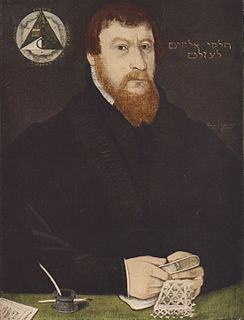Fróði is the name of a number of legendary Danish kings in various texts including Beowulf, Snorri Sturluson's Prose Edda and his Ynglinga saga, Saxo Grammaticus' Gesta Danorum, and the Grottasöngr. A Danish king by this name also appears as a minor character in the Middle High German epic Die Rabenschlacht. The name is possibly an eponym for the god Freyr.

Lotherus (Lother) was one of the earliest kings of Denmark according to Saxo Grammaticus's Gesta Danorum.
Hothbrodd was a legendary Norse hero, details of whose life appear in several related variations.
Glæsisvellir was a location in Jotunheim in Norse mythology. It is mentioned in sources, such as Bósa saga ok Herrauds and Hervarar saga.

Anders Sørensen Vedel was a Danish priest and historian. He translated the Gesta Danorum by Saxo Grammaticus into Danish in 1575, and published the influential "Hundredvisebogen" in 1591.

Dan I was the progenitor of the Danish royal house according to Saxo Grammaticus's Gesta Danorum. He supposedly held the lordship of Denmark along with his brother Angul, the father of the Angles in Angeln, which later formed the Anglo-Saxons in England.

Humblus was one of the earliest kings of Denmark according to Saxo Grammaticus's Gesta Danorum.

Skjöldr was among the first legendary Danish kings. He is mentioned in the Prose Edda, in Ynglinga saga, in Chronicon Lethrense, in Sven Aggesen's history, in Arngrímur Jónsson's Latin abstract of the lost Skjöldunga saga and in Saxo Grammaticus' Gesta Danorum. Under the name Scyld he also appears in the Old English poem Beowulf. The various accounts have little in common.

Gram was one of the earliest legendary Danish kings according to Saxo Grammaticus' Gesta Danorum. His history is given in more detail than those of his predecessors. Georges Dumézil argued that Gram was partially modelled on the god Thor, in particular his defeat of Hrungnir and subsequent encounter with Gróa.
Dan II is one of the legendary Danish kings, the son of Offa of Angel, described in Saxo Grammaticus' Gesta Danorum.
Dan III is one of the legendary Danish kings described in Saxo Grammaticus' Gesta Danorum.
Frotho II is one of the legendary Danish kings described in Saxo Grammaticus' Gesta Danorum.
Fridlevus I is one of the legendary Danish kings described in Saxo Grammaticus' Gesta Danorum.
Harthgrepa or Harðgreip in Old Norse is a giantess who appears in the legend of the Norse hero Hadingus, which is reported by Saxo Grammaticus in his Gesta Danorum.

Runamo is a cracked dolerite dike in Sweden that was for centuries held to be a runic inscription and gave rise to a famous scholarly controversy in the 19th century. It is located 2.7 km from the church of Bräkne-Hoby in Blekinge, in South-Sweden.For hundreds of years people said it was possible to read an inscription, and learned men referred to it.
Yngwin ("Yngve") was, according to Gesta Danorum, a king in Götaland, who was a close friend to one of the Danish kings named Halfdan.
Frotho III was a legendary king of Denmark. He was mentioned by Saxo Grammaticus in Gesta Danorum and in the Skjöldunga saga. Grammaticus' account of his reign is considered a historicized version of the Vana-god Frey and was particularly demonstrated in the section detailing the king's war against the Huns.









